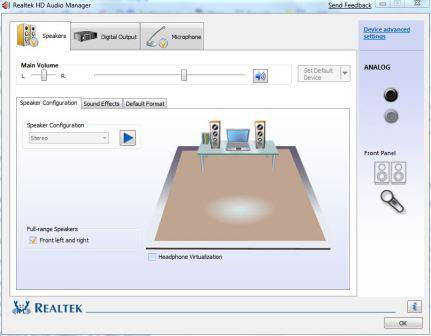

- #GIGABYTE REALTEK HD AUDIO MANAGER NO SOUND HOW TO#
- #GIGABYTE REALTEK HD AUDIO MANAGER NO SOUND INSTALL#
- #GIGABYTE REALTEK HD AUDIO MANAGER NO SOUND DRIVERS#
- #GIGABYTE REALTEK HD AUDIO MANAGER NO SOUND UPDATE#
Do you need Realtek High Definition Audio or not?
#GIGABYTE REALTEK HD AUDIO MANAGER NO SOUND UPDATE#
Or worse, there is no Realtek HD Audio Manager error, especially after you update Windows or it may be caused by other malicious software.

Sometimes, Realtek HD Audio Manager software on your Windows 10 computer does not open or does not work for some reason that you do not know. Realtek HD Audio Manager comes with the Realtek High-Definition (HD) audio driver, which is available on almost any Windows computer. You can open this software on Windows 10 and any audio device you want to use. Realtek HD Audio Manager when installed, will automatically detect and add a microphone, headphones, and speakers so you can use it. Most computers today use the Realtek Driver to manage the PC’s sound. This software helps your Windows operating system communicate with audio devices such as sound cards, microphones and speakers.
#GIGABYTE REALTEK HD AUDIO MANAGER NO SOUND INSTALL#
#GIGABYTE REALTEK HD AUDIO MANAGER NO SOUND HOW TO#

It could be because some ports on the computer are only for PS2 mice and keyboards, so a USB keyboard or mouse will cause problems. Some users have reported that disconnecting their mouse and keyboard from the PC fixed the audio popping problem. This is especially true if you have a digital audio plug on the back of your PC. It has solved the problem for a lot of people. Find the different ports and try plugging your speakers into the different ones and see if the issue goes away. On lots of machines you have the normal headphone jack, but you may also have some other jacks like HD Audio or something else. I’ve also read that some Method 7 – Try Different Audio Port on PCĪs strange as it may sound, you could have your speakers or headphones plugged into the wrong jack on your computer. Any other type of real-time software should be disabled. This includes real-time anti-virus software (even Security Essentials) or real-time CPU/hardware monitoring software. If you have any real-time software, it’s best to disable it. Getting rid of these will fix the crackling problem. Here you need to uninstall some audio software that comes on the machine, namely Sonic Master and ASUS Asio. If you have an ASUS machine and a Realtek driver, then the issue is not the driver. Here you want to find something called ATI HDMI Audio and disable that. You want to go to Device Manager and then expand Sound, Video and Game Controllers. This won’t work for everybody, but if you have it in Device Manager, it is probably the cause.
#GIGABYTE REALTEK HD AUDIO MANAGER NO SOUND DRIVERS#
If you find that disabling your network card or some other device drops the latency a lot, then you probably have to reinstall the drivers with the latest from the manufacturer’s website. Basically, you want to see green bars like above and nothing in the red area up top. On the download page, they also have an entire explanation of how to use the program to figure out which device is causing the latency. It will help you figure out what is causing the latency, such as a network adapter. There is a cool program called DPC Latency Checker that monitors your computer’s performance in real time. You can disable it by right-clicking on the volume icon in the taskbar, choosing Recording Devices and then disabling the S/PDIF In or any other Line In port.ĭepending on your system, there could be a high latency affecting performance and thereby causing serious audio problems.


 0 kommentar(er)
0 kommentar(er)
